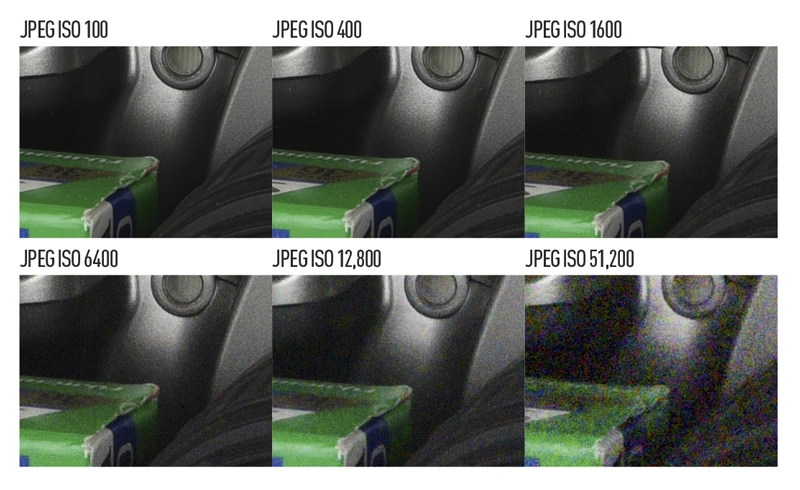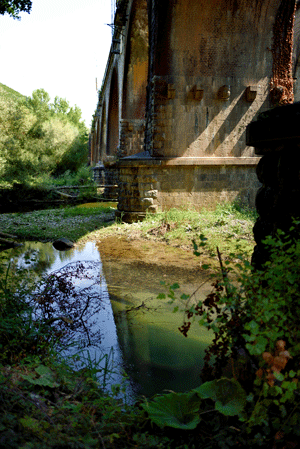

Image noise of the Nikon D750 at different ISO numbers
This means: ISO numbers as deep as possible but as high as necessary. In macro photography, this is rarely an issue. In wide-angle and fisheye shots, the ambient light is a crucial factor and makes the images worth seeing.
Shutter speed: Unlike on land, underwater sharp pictures with a shutter speed up to 1/80 sec. are possible without a tripod because the waters high density works stabilizing (unless the subject itself moves too fast). (unless the subject itself moves too fast). For moving motifs such as schools of fish, however, 1/100 sec. is as good as it gets After that, blurring is already created by the movement. When working with external strobes, the maximum strobe sync time is usually 1/250 or 1/200 sec. With shorter shutter speeds, strobes in TTL mode will no longer function correctly. When the semi-automatic mode ‘S’/’Tv’ is used, the shutter speed is set to a fixed value and the correct aperture value is calculated by the camera.
Aperture: The aperture is a creative element in macro photography and directly influences the range, which is sharply displayed. Higher aperture numbers result in a greater depth of field and thus make more of the image appear sharp. Smaller aperture values reduce the sharp area and can thus focus the eye of the viewer specifically on one point.

For wide angle and fisheye shots, I usually use a quite high aperture value. Experience shows that I achieve the most beautiful blue with aperture 16 with my Nikons. Of course, there must be sufficient light for this, that the exposure time of 1/80 sec. is sufficient. If the mode ‘A’/’Av’ (automatic shutter speed) is used, the aperture will be set to a fixed value and the camera will calculate the necessary shutter speed for correct exposure.
Important!: The screen brightness of the camera must be set correctly. A camera screen set too bright easily leads to underexposure. This is a detail that is often forgotten, especially during night dives. Take pictures rather underexposed. Today’s PC/Mac post-processing software makes it easy to brighten a dark image. Overexposed areas are simply white and remain so even with the best software, because they no longer contain any color information. Dark areas contain a lot of image information and can be easily brightend and will reveil a lot of detail. If you have a histogram view available, use it and pay attention to the so-called clipping. My cameras have a ‘High Lights Indicator’ when displaying the image. The areas without color information on the camera screen blink white and indicate the overexposed areas. Use then a shorter exposure time, a higher aperture value, or reduce the ISO number.

And now enough of the theory, because it’s like many other things in life, practice makes perfect!